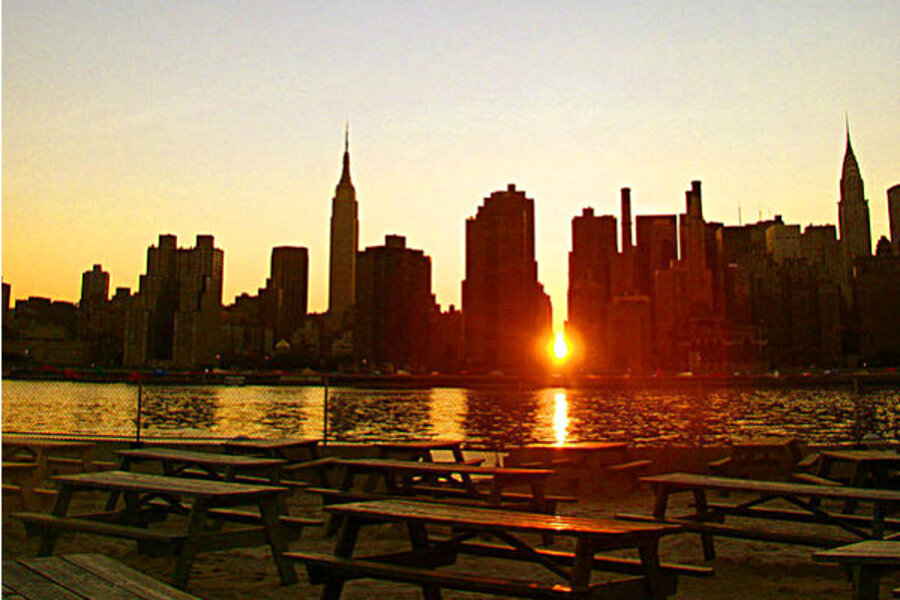Sunset to transform New York City into 'Manhattanhenge'
Loading...
New Yorkers will be treated to a splendid sight this evening (July 12): It's one of two days a year when the setting sun aligns perfectly with Manhattan's street grid. As the sun sets on the Big Apple, it will illuminate both the north and south sides of every cross street.
The event has been dubbed "Manhattanhenge" for the way it turns New York City into a Stonehenge-like sun dial.
The sun sets perfectly in line with the Manhattan street grid twice a year, explains astrophysicist Neil deGrasse Tyson on the Hayden Planetarium website. The first round of Manhattanhenge 2012 happened at dusk on May 29. The peak viewing time for tonight's repeat event is 8:25 p.m. EDT.
The best way to watch Manhattanhenge, Tyson says, is to get as far east as possible on one of the city's major cross streets, such as 14th, 23rd, 34th, 42nd or 57th streets, and look west toward New Jersey. (The streets immediately adjacent to these wide cross streets will work fine, too, but the view won't be quite as stunning.) Standing on 34th or 42nd street provides a particularly nice view, as the views include the Empire State Building and the Chrysler Building. It's a good idea to get to your spot 30 minutes early, so you can beat out the other sun worshippers. [Do Sunrises Look Different from Sunsets?]
Not in New York? Tyson notes that any city crossed by a rectangular grid will experience days when the setting sun aligns with their streets. However, a closer look at such cities around the world shows most are less than ideal for this purpose, because they don't have a clear westward view to the horizon, as Manhattan has across the Hudson River to New Jersey.
"So Manhattanhenge may just be a unique urban phenomenon in the world," he said, "if not the universe."
Follow Life's Little Mysteries on Twitter @llmysteries, then join us on Facebook.
- The Greatest Mysteries of the Planets
- What Would Earth Be Like with Two Suns?
- Gallery of the Craziest Clouds
Copyright 2012 Lifes Little Mysteries, a TechMediaNetwork company. All rights reserved. This material may not be published, broadcast, rewritten or redistributed.







